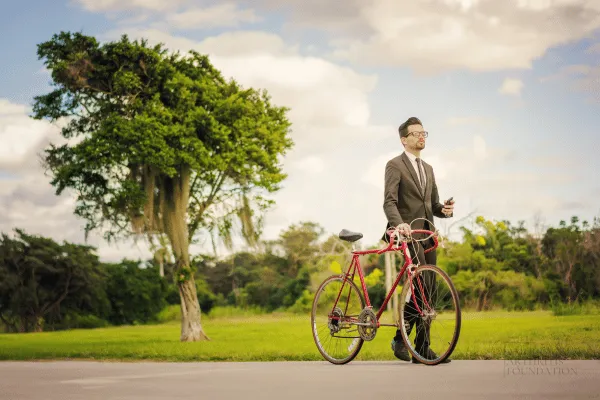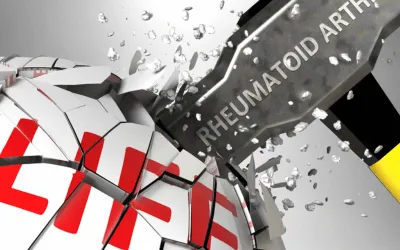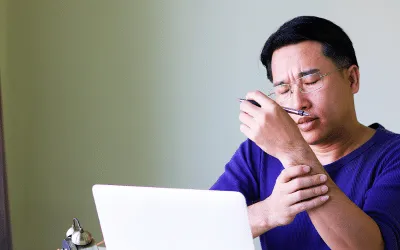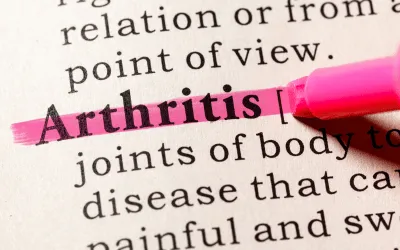About Arthritis
As the nation’s #1 cause of disability, arthritis affects nearly 60 million adults and 300,000 children. Over 100 types of arthritis and related conditions damage the joints and often other organs.
How can we assist you?
Helpful Tools for You

How Walking, Swimming, and Cycling Are Revolutionizing Healthy Aging
What if the key to maintaining your independence, protecting your brain, and feeling decades younger wasn't hidden in an expensive supplement or complicated workout routine? What if it was as simple as taking a daily walk, jumping in a pool, or dusting off that old bicycle?
Recent 2025 research is proving that walking, swimming, and cycling aren't just good exercise—they're powerful medicine for aging bodies and minds. These three low-impact activities are emerging as the "triple threat" against age-related decline, offering benefits that go far beyond what scientists previously understood.
The Game-Changing Discovery: Exercise as Brain Medicine
Here's something that might surprise you: Recent studies show that just 5 minutes of brisk walking can boost your brain function. But the real breakthrough came in July 2025, when researchers unveiled findings from a 10-year study of nearly 3,000 adults aged 70-79. The results were nothing short of revolutionary.
The study found that people who maintained or increased their walking habits over the years showed "greater improvements in processing speed and executive function." Most remarkably, the benefits were especially pronounced among those with a genetic predisposition for developing Alzheimer's disease.
This isn't just about preventing decline—it's about actually improving cognitive function as you age.
Walking: The Wonder Drug With No Side Effects
The Brain-Boosting Breakthrough
Research shows that participants who walked more than 4,000 steps per day had healthier brain tissue in the area responsible for memory, learning, and cognitive function than those who did not. That brain region, called the hippocampus, typically begins to shrink in late adulthood.
But here's where it gets interesting: A 2025 study found that just moving from about 1 minute of moderate-to-vigorous walking per day to 6 minutes per day had the largest predicted improvements in executive function, processing speed, and working memory.
What Makes Walking So Powerful?
Stress Reduction: Walking in nature has been shown to be particularly effective at reducing stress levels, with scientists noting that "optic flow"—the perception that objects are moving past us as we walk—quiets the circuits responsible for stress.
Creativity Boost: A Stanford University study found "creative output increased 60 percent when participants were walking," even on a treadmill facing a blank wall.
Bone Health: Unlike swimming or cycling, walking is a weight-bearing exercise that helps maintain bone density—crucial for preventing fractures as we age.
How to Maximize Your Walking Benefits
Start Small: Even minor adjustments to daily routines, such as incorporating brisk walks, can significantly enhance cognitive functions.
Make it Brisk: The key is walking at a pace where you notice your heart rate and breathing increase—this is when the brain benefits really kick in.
Be Consistent: The researchers recommend "maintaining consistent walking habits year to year to prevent cognitive decline".
Add Social Elements: Walking with friends or family can combat isolation and provide additional mental health benefits.
Swimming: The Ultimate Joint-Friendly Workout
Why Water Changes Everything
Studies show that water workouts reduced pain and joint dysfunction and improved quality of life for people with osteoarthritis (OA). Of particular note: Aquatic exercise relieved pain better than land-based exercise, possibly because warm pool water relaxes muscles and nerve endings.
The Full-Body Benefits
Cardiovascular Health: Swimming can help you burn calories, boost mental health, lose weight, and build strength, all while being incredibly gentle on joints.
Muscle Resistance: Muscles face more resistance in water than on land. That means you don't need to pick up heavy weights to combat muscle loss. Pushing and pulling the water with your own bodyweight is its own form of strength training.
Safety Record: Running, tennis, and team sports are associated with a higher risk of injuries among adults. Swimming, by contrast, is not—which is one reason so many exercise physiologists tout it as an ideal lifelong sport.
Getting Started With Swimming
You Don't Need to Be a Swimmer: You don't need to be a strong swimmer—or even know how to swim—to benefit from aquatic exercise. Water aerobics classes welcome everyone, regardless of swimming ability.
Start with Water Walking: If lap swimming feels intimidating, begin with walking in chest-deep water. The buoyancy will support your joints while providing resistance training.
Consider Warm Water Programs: Many facilities offer arthritis-specific water exercise programs in heated pools (90-94°F) that provide additional muscle relaxation benefits.
Cycling: The Joy of Movement Rediscovered
The Renaissance of Senior Cycling
Studies show that when older adults cycle regularly, their happiness improves and they are better able to maintain their quality of life. But the benefits go far beyond mood improvement.
Joint Health Revolution
Cycling can reduce health markers such as fat mass, blood pressure, and cholesterol in older adults, as well as fear of (and risk of) falling. The repetitive motion of cycling can improve joint lubrication and reduce stiffness.
Perfect for Arthritis: Cycling helps strengthen the muscles around the joints, providing better support. The repetitive motion can improve joint lubrication and reduce stiffness.
Balance and Coordination: One study found that cycling for at least one hour per week significantly improved older people's balance, potentially making them less vulnerable to falls.
The E-Bike Game Changer
E-bike ownership rates among seniors have grown dramatically, with features like pedal assist and motorized power making it easier for seniors to cover longer distances, tackle hills, and ride for extended periods, all while reducing strain on the body.
Options for Every Ability Level
Traditional Bicycles: Great for those comfortable with balance and standard bikes.
Recumbent Bikes: Provide back support and are easier to get on and off, making them ideal for people with balance concerns or back problems.
Adult Tricycles: Research shows that many seniors prefer three-wheeled adult tricycles for increased stability.
Stationary Bikes: Perfect for home use and poor weather days, offering all the joint and cardiovascular benefits of outdoor cycling.
The Science of Low-Impact Success
Why These Three Activities Work So Well Together
Complementary Benefits: Walking builds bone density, swimming provides joint relief and full-body resistance, and cycling improves balance and leg strength.
Sustainable Intensity: Low-impact exercise includes walking, cycling, yoga, swimming, and strength training at a steady, controlled tempo. You can still test the limits of your strength and cardiorespiratory endurance with low-impact exercise.
Reduced Injury Risk: For those who are newly active or returning to exercise—especially older adults who are more prone to muscle and bone-density loss—an initial period of low-impact exercise helps build a foundation for activity.
Creating Your Personal Low-Impact Program
The Weekly Template
Monday/Wednesday/Friday: 30-minute walks (aim for brisk pace for at least 10 minutes) Tuesday/Thursday: Swimming or water aerobics (30-45 minutes) Saturday: Cycling (start with 20-30 minutes, build up gradually) Sunday: Rest or gentle movement like stretching
Progressive Goals by Month
Month 1: Focus on consistency and comfort
Walking: 15-20 minutes daily
Swimming: 2-3 times per week, 20-30 minutes
Cycling: Once weekly, 15-20 minutes
Month 2: Build endurance
Walking: 25-30 minutes daily, include some brisk intervals
Swimming: 3 times per week, 30-40 minutes
Cycling: Twice weekly, 25-30 minutes
Month 3 and Beyond: Optimize and enjoy
Walking: 30+ minutes daily, with varied terrain and social partners
Swimming: 3-4 times per week, try different strokes or water aerobics
Cycling: 2-3 times per week, explore different routes or try an e-bike
Equipment Essentials
Walking:
Comfortable, supportive shoes
Weather-appropriate clothing
Optional: walking poles for stability and upper body engagement
Swimming:
Comfortable swimsuit
Water shoes for pool deck safety
Optional: flotation belt, water weights, or kickboard
Cycling:
Properly fitted bicycle or access to stationary bike
Helmet for outdoor riding
Consider: e-bike for hills, recumbent bike for back support
Overcoming Common Concerns
"I'm Not Fit Enough to Start"
According to Harvard Medical School, regular exercise promotes an older adult's ability to walk, bathe, cook, eat, dress, and use the restroom. If self-reliance is a priority, exercise is one of the best ways to maintain independence.
Start with just 5-10 minutes of any activity. Your body will adapt and strengthen with consistency.
"I Have Joint Pain"
These three activities are specifically recommended for people with arthritis and joint issues. The low-impact nature actually helps reduce pain over time by strengthening supporting muscles and improving joint lubrication.
"I'm Afraid of Falling"
Regular exercise reduces the likelihood of falling by 23%. Start with the most comfortable activity (often walking or stationary cycling) and gradually build confidence.
"I Don't Have Time"
Remember: Just 5 minutes of brisk activity can improve brain function. Even small amounts of movement provide significant benefits.
The Social and Mental Health Bonus
Beyond Physical Benefits
Community Connection: Research suggests that social interaction and support are key motivators compelling elderly people to begin and maintain an exercise program.
Mental Health: Cycling also benefits my mental health. My attitude and overall focus are always improved by being on the bike.
Independence and Confidence: Getting out and cycling can reduce feelings of isolation and promote social interaction.
The 2025 Reality: Age Is Just a Number
Growing older doesn't have to mean declining physical fitness. In fact, many adults gain a renewed interest in health and personal fitness because they have more time to devote to exercise. Some people even become weightlifters for the first time as older adults.
The research is clear: walking, swimming, and cycling aren't just activities to pass time—they're investments in your future independence, cognitive health, and quality of life.
Your Next Steps: Starting Your Low-Impact Journey
This Week:
Choose your starting activity based on comfort and accessibility
Schedule 3 sessions of 10-15 minutes each
Find your support system—whether it's a walking buddy, swimming class, or cycling group
This Month:
Build consistency before increasing intensity
Track how you feel before and after each session
Gradually add the second activity to your routine
This Quarter:
Incorporate all three activities into your weekly routine
Set specific goals (distance, time, or frequency)
Celebrate your progress and the improvements you notice
The Bottom Line
In 2025, we know more than ever about the power of movement to transform aging. Walking, swimming, and cycling aren't just exercise—they're your prescription for maintaining independence, protecting your brain, and adding both years to your life and life to your years.
The question isn't whether you're too old to start. The question is: can you afford not to?
Your future self is counting on the choices you make today. Which activity will you try first?

Effects of Arthritis

Cause of Disability
In the United States, 23% of all adults, or more than 54 million people, have arthritis. It is a leading cause of work disability, with annual costs for medical care and lost earnings of $303.5 billion.

Workforce Effects
Sixty percent of US adults with arthritis are of working age (18 to 64 years). Arthritis can limit the type of work they are able to do or keep them from working at all.

Global Impact
In fact, 8 million working-age adults report that their ability to work is limited because of their arthritis. For example, they may have a hard time climbing stairs or walking from a parking deck to their workplace.
Promoting Interventions That Reduce Arthritis Pain
American Arthritis Foundation recognizes several proven approaches to reduce arthritis symptoms:
Be active. Physical activity—such as walking, bicycling, and swimming—decreases arthritis pain and improves function, mood, and quality of life. Adults with arthritis should move more and sit less throughout the day. Getting at least 150 minutes of moderate-intensity physical activity each week is recommended.
Protect your joints. People can help prevent osteoarthritis by avoiding activities that are more likely to cause joint injuries.
Talk with a doctor. Recommendations from health care providers can motivate people to be physically active and join a self-management education program. Should your arthritis be interfering with your activities of daily living you may be a candidate to receive many new treatments, and learn how to reverse the arthritis condition.


